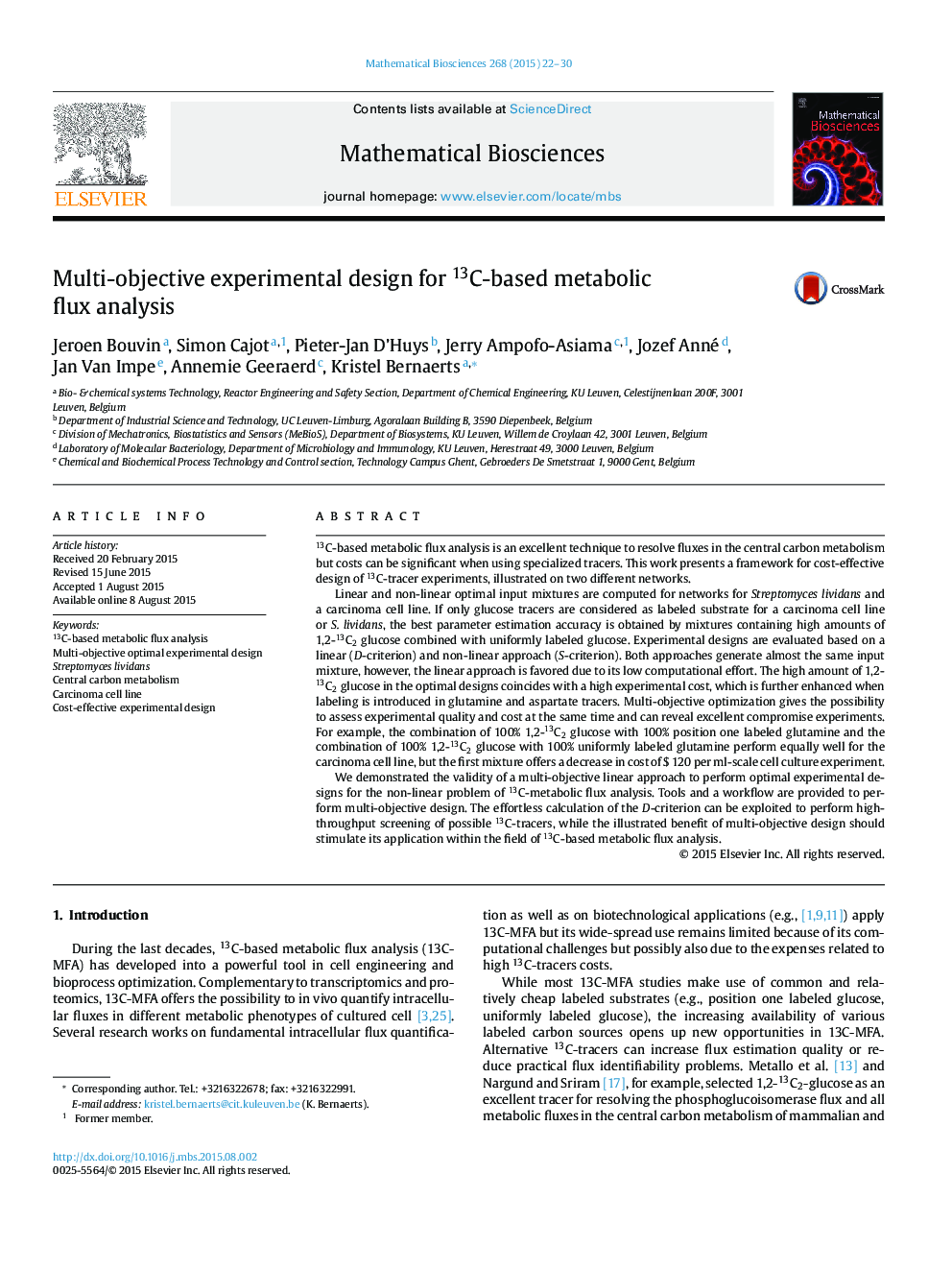| Article ID | Journal | Published Year | Pages | File Type |
|---|---|---|---|---|
| 4499953 | Mathematical Biosciences | 2015 | 9 Pages |
•First multi-objective optimal design for 13C-metabolic flux analysis presented.•Flexible design framework built using two existing software platforms.•D-optimal design and S-optimal design return similar outcomes.•Multi-objective approach reveals alternative, cost-effective mixture designs.
13C-based metabolic flux analysis is an excellent technique to resolve fluxes in the central carbon metabolism but costs can be significant when using specialized tracers. This work presents a framework for cost-effective design of 13C-tracer experiments, illustrated on two different networks.Linear and non-linear optimal input mixtures are computed for networks for Streptomyces lividans and a carcinoma cell line. If only glucose tracers are considered as labeled substrate for a carcinoma cell line or S. lividans, the best parameter estimation accuracy is obtained by mixtures containing high amounts of 1,2-13C2 glucose combined with uniformly labeled glucose. Experimental designs are evaluated based on a linear (D-criterion) and non-linear approach (S-criterion). Both approaches generate almost the same input mixture, however, the linear approach is favored due to its low computational effort. The high amount of 1,2-13C2 glucose in the optimal designs coincides with a high experimental cost, which is further enhanced when labeling is introduced in glutamine and aspartate tracers. Multi-objective optimization gives the possibility to assess experimental quality and cost at the same time and can reveal excellent compromise experiments. For example, the combination of 100% 1,2-13C2 glucose with 100% position one labeled glutamine and the combination of 100% 1,2-13C2 glucose with 100% uniformly labeled glutamine perform equally well for the carcinoma cell line, but the first mixture offers a decrease in cost of $ 120 per ml-scale cell culture experiment.We demonstrated the validity of a multi-objective linear approach to perform optimal experimental designs for the non-linear problem of 13C-metabolic flux analysis. Tools and a workflow are provided to perform multi-objective design. The effortless calculation of the D-criterion can be exploited to perform high-throughput screening of possible 13C-tracers, while the illustrated benefit of multi-objective design should stimulate its application within the field of 13C-based metabolic flux analysis.
